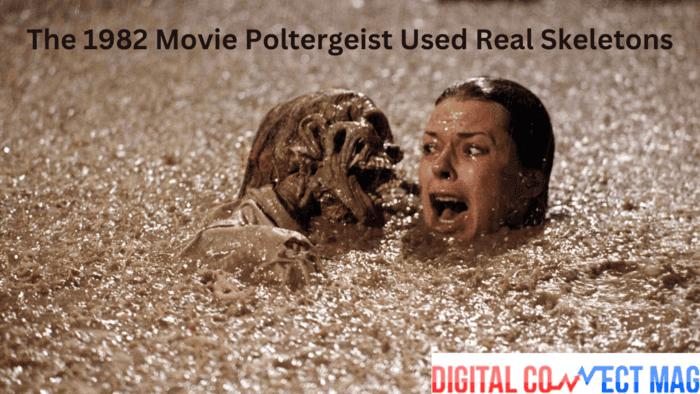
The 1982 horror classic “Poltergeist” used real human skeletons as props, adding a spooky twist to its reputation. Directed by Tobe Hooper and produced by Steven Spielberg, “Poltergeist” stands out in the horror genre for its special effects and eerie story.
But its use of genuine human bones sparks debate about art, ethics, and authenticity in filmmaking. Despite its cinematic success, the movie’s choice to incorporate real skeletons remains controversial and intriguing.
The Secret of the Real Skeletons
In the movie “Poltergeist,” amid the suburban horror and ghostly events, real human skeletons were used as props. This choice, especially visible in the intense pool scene with JoBeth Williams, mixes special effects with a disturbing reality.
To save money and create impactful visuals, the production team chose genuine skeletons over artificial ones, despite the eerie nature of the decision. While not unique to “Poltergeist,” the film’s popularity brought attention to this practice.
Thinking About What’s Right and Normal in the Movie Business
Using real skeletons in the movie raises big questions about what’s right and wrong in art and what filmmakers should do. This debate is all about respecting the dead, whose bones were used in the movie without permission.
Back then, it wasn’t clear if this was okay, but now there are rules in the industry about treating human remains with dignity. The “Poltergeist” situation shows how things have changed in the industry and makes filmmakers today think harder about their choices.
Effects on Special Effects and Realness
Using real skeletons in “Poltergeist” shows how far filmmakers went to make movies look real before they had CGI and fancy animatronics. They had to be creative, even if it meant doing things that weren’t quite right.
Using real human bones was a big moment in movie history, blending realism with moral questions. It makes us think about how important realism is in stories and what it might cost to make it happen.
Today’s Movie-Making and Doing the Right Thing
Moviemaking has changed a lot nowadays because of new technology and better ethics. CGI and fancy robots mean filmmakers don’t need real human bones anymore, so they can be more creative without moral problems.
There are strict rules now about how to show and handle sensitive stuff, like bones, in movies. This shows that people care more about respecting others and thinking about what’s right when they make movies
Conclusion
Using real skeletons in the 1982 movie “Poltergeist” shows how complicated moviemaking can be. It’s a mix of not having the right technology, wanting to be creative, and thinking about what’s right.
This part of making the movie reminds us how ethics in entertainment have changed over time and how people still argue about what’s okay in art. “Poltergeist” teaches filmmakers to think hard about being real but also respectful and honest when they make movies.
